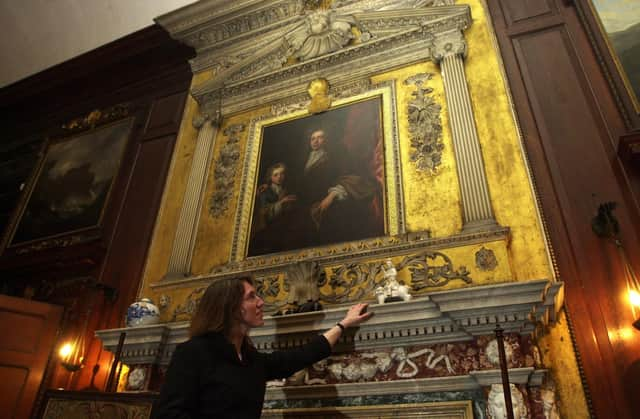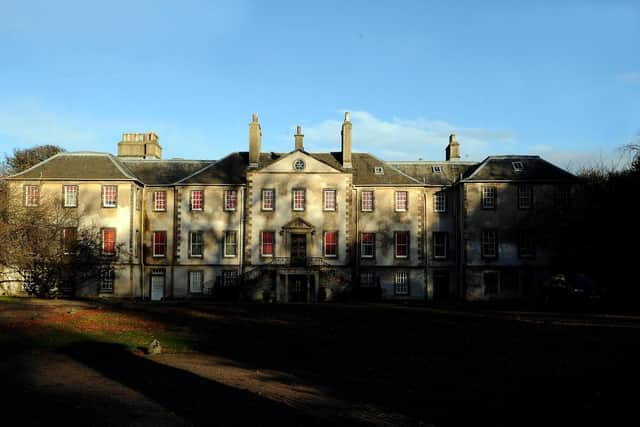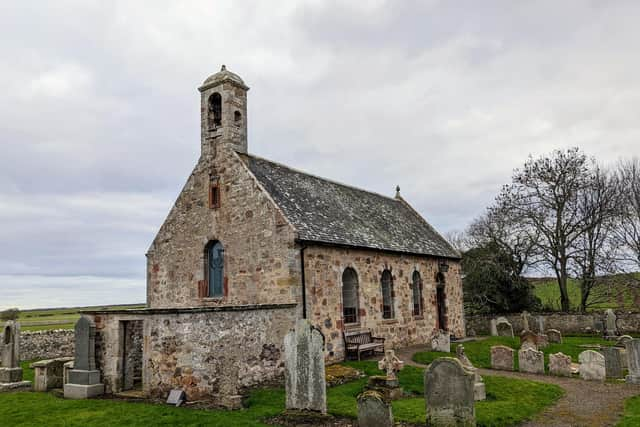Exclusive:Ancient Scots dynasty in court action over controversial plans to re-bury bodies


It is the final resting place of several members of one of the most prominent families in Scotland’s history. In one vast, lead coffin lies a former Lord Advocate who was one of the commissioners who negotiated the Acts of Union. Another holds the remains of a key figure in the Scottish Enlightenment, who counted Dr Johnson among his friends, and served as one of the judges who consigned Deacon Brodie to the gallows.
Now, centuries after several generations of the Dalrymple family were laid to rest in an undercroft beneath a remote kirk in East Lothian, their oldest direct descendant is preparing to go to court in an attempt to prevent them from being stirred from their long sleep.
Advertisement
Hide AdAdvertisement
Hide AdAdam Fergusson, a 91-year-old author and former politician, has questioned plans by the Church of Scotland to disinter his ancestors ahead of the proposed sale of Morham Kirk, a picturesque church in a village once thriving with weavers and agricultural workers, but which has long been reduced to a patchwork of fields and a single row of houses. The church is one of only a few other remaining buildings, but it alone speaks to Morham’s storied past. In its grounds stand the headstones of the Knox family – some historians have even posited that Morham itself was the birthplace of John Knox – and beneath the kirk site, which dates back to the 12th century, lies those with a link to the present.
In all, nine members of the Dalrymple family are in a crypt below the building. The first to be laid there back in 1721 was Sir David Dalrymple, the 1st Baronet of Hailes, who, as well as serving as Lord Advocate, sat in both the old Scottish Parliament, and after his work in ratifying the Acts of Union, the first terms of the Commons following the creation of Great Britain. Three decades later, he was followed by his son, Sir James, an MP for Haddington Burghs, who also held the office of principal auditor of the Exchequer in Scotland. Then, in 1792, Sir James’s son, Lord Hailes, was committed to the crypt. To this day, he remains the most notable member of the Dalrymple clan; in addition to his work as a judge, he was an acclaimed historian, and amassed a vast collection of books, prints, art and maps that were utilised by his contemporaries, Adam Smith and David Hume.
To this day, that collection resides at Newhailes House, a grand Palladian style country house near Musselburgh. It was home to the Dalrymples for nearly 300 years, but nowadays is in the care of the National Trust for Scotland. The Dalrymple dynasty has waned, but Newhailes and the humble church in Morham are the threads that bind its past generations together.
The secluded kirk is no longer used for services, but Mr Fergusson, whose great-great-great-great grandmother, Helen Fergusson, married Lord Hailes, said he believed that should not mean its sale should be rushed through without due consideration being paid to those who came before him. “There is a very distinct family interest in keeping the remains of my ancestors in the crypt, whether the church is sold or not, instead of them being repackaged and sent off somewhere else,” he explained.
Advertisement
Hide AdAdvertisement
Hide Ad“We don’t know yet whether anyone’s going to buy the church, though someone probably will. And we don’t know what they would plan to do to the church. It could be turned into flats, or it could even become a church again. My position is that the purchaser should have the opportunity of purchasing the crypt as it is with the church, because it and the coffins belong there.”


The idea of disinterring those Dalrymples from the crypt and reburying them in new coffins at a church in Haddington is also complicated by practicalities. The passage of time means it is no longer possible to identify the individual coffins, several of which are in a state of disrepair. Then there is the not insignificant fact the nine coffins are made of lead and, in Mr Fergusson’s words, “heavy and enormous”.
But more than that, he says, there is an even more compelling argument in favour of keeping the remains where they are. “My position is these people built the crypt for their own use, and thought it was their last resting place,” he pointed out. “They would not want to be transported to Haddington centuries on.”
What becomes of the Dalrymples is a complex issue for the Kirk. The proposal to sell off the church in Morham is part of a wider rationalisation of its built estate that is expected to result in hundreds of closures around the country over the next few years, to stave off spiralling maintenance and repair costs for properties that are no longer fit for purpose amid dwindling congregations and income.
Advertisement
Hide AdAdvertisement
Hide AdEvery individual decision taken by presbyteries has an impact on congregations and communities, but few are quite as delicate as the situation involving Mr Fergusson and his forebears, a fact the Kirk is mindful of. “We are not in a position to comment at present due to ongoing legal proceedings,” said a spokeswoman for the Church of Scotland. “However, we do recognise the sensitivities of this situation and will work carefully with others to attempt to reach a suitable resolution.”


While the process of disinterment in the event of a church’s sale is considered rare, one concern arising from the Dalrymple case is that, if the church’s proposal is greenlit, it may set a precedent. This is according to Dr DJ Johnston-Smith, director of Scotland’s Churches Trust, a charity set up to preserve, promote and protect the nation’s rich ecclesiastical built heritage.
“There are several pre-Reformation churches that have unknown burials beneath them or maybe marked burials if there’s a memorial slab somewhere in the church, but there are also several churches that have burial aisles built by whoever built the church or its patron in the 17th or 18th centuries,” he said. “These churches are also being sold, and it’s a lot easier to sell a church if it’s not got a room full of human remains in the basement.”
As far as the Morham issues are concerned, Mr Fergusson said while he was determined to ensure disinterment does not go ahead, his correspondence and discussions with the Church of Scotland have been friendly and open. A hearing will take place soon at Edinburgh Sheriff Court, where the former MEP intends to represent himself regarding a writ seeking permission to relocate his ancestors. While no decision is expected imminently, Mr Fergusson, a former journalist who worked for the-then Glasgow Herald, and later joined The Times, plans to set out his case.
Advertisement
Hide AdAdvertisement
Hide AdPart of it involves section 33 of the Church of Scotland (Property and Endowments) Act 1925 – legislation that covers the preservation of human remains in churchyards and churches. It stipulates that any person who satisfies the general trustees they have any interest in any such burial ground on the basis of their relationship with the deceased shall be entitled, with the approval of a parish council, or the trustees, to provide for its preservation and maintenance.
Like everyone involved, the NTS, which informed Mr Fergusson about the plans involving his ancestors, is eager to see the issues resolved. “We have been corresponding with Mr Fergusson on this matter,” a spokeswoman said. “We are sympathetic to all parties involved. Whatever the outcome, the National Trust for Scotland would like to see the historical link with Newhailes retained in some appropriate manner.”
Now that he is in his tenth decade, Mr Fergusson said he has no desire to assume ownership or maintenance responsibilities for the crypt, but will instead put forward what he hopes is a straightforward request to the court based on the 1925 legislation. “It’s really saying that anyone is allowed to step in and say ‘I’m related to these people, and I want to have a say in what happens to them’,” he reasoned. “What all this means, I don’t know. What I’m not going to do is to take over their crypt, but I want my ancestors to go on sleeping there.”
Comment Guidelines
National World encourages reader discussion on our stories. User feedback, insights and back-and-forth exchanges add a rich layer of context to reporting. Please review our Community Guidelines before commenting.